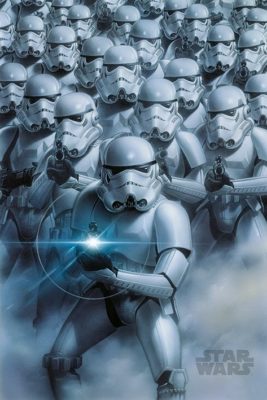“Hey, it’s ya boiiiiii. Thanks for the 200 bits, cancerfart420. Holy shit, these queue times are seriously pepega. I just wanna frag out, man. Okay, my team’s here. PogU. Ready to get carried, boys? Here we go.
“Oh my God. That guy was trash. Trash. Terrible. Complete dogshit. The only reason he killed me was because I missed my shots and he hit his shots. Literally, that’s the only reason he beat me. If I hit my shots and he missed his, he’d be dead. That’s how trash he is.
“Holy shit, that gun keeps melting me. Nerf that shit already. I asked a dev about adding some extra bloom to the recoil pattern, and he said they’d consider it. That’s right. I talk to game devs on Twitter. No kappa. You won’t hear me mention it, though, I keep that fact on the down-low.
“This kid’s aim is feelsweirdman. I don’t want to be that guy, but could he be…hacking? Okay. That does it. I’m spectating this little shit. Oh, look, he has “TTV” in his name. I’m not telling you to go to his Twitch stream and bully him. I’d get banned if I did that. All I’ll do is insinuate that he’s hacking and then loudly read his Twitch handle to my viewers.
“Goddamn, I’m actually whiffing everything. Okay, I’m changing my mouse sens again. Please watch me for 5 minutes while I do this. This is now a tech support stream. Wait, why does my mouse have “CPI”? Is that the same thing as “DPI”? Can someone tell me? Also, why aren’t my stream alerts working? I need my chat to diagnose and fix everything wrong in my entire life.
“This is gonna be a huge nade. Huge. Kobe. Do you know that ‘kobe’ means a grenade thrown with accuracy and precision while ‘yeet’ means a grenade thrown with raw power ? I’m sure this is the first streamer you’ve ever seen explain this. Glad to help educate y’all.
“Okay, I see some little kids causing trouble in chat. Where are my mods? For the last time, I’m not a racist. All I did was call a black teammate a monkey and tell him to get back to Africa. How’s that racist? Technically we’re ALL monkeys and we ALL come from Africa. Try reading a book sometime, 4head. Anyway, that incident happened fifteen whole days ago, and I apologised for it. Yes, you heard me. Even though I did nothing wrong and was 100% in the right, I still apologized. That’s the kind of guy I am.
“Just drop it. I’m not here for drama. I just come on here to chill with you guys and to spread positive vibes. Yo, thanks for the 500 bits. My boy cancerfart420 going crazy today.”
No Comments »
“Fan theories” have become increasingly popular in recent years (now you know what they are). Like the related phenomenon of “creepypastas”, they’re exciting at first but soon fall into repetitive cliches: bad guy is secretly good, good guy is secretly bad, dumb guy is secretly a genius, up is secretly down, main character is secretly dying of cancer and hallucinating. There’s 10-15 basic fan theories and soon you’ll have seen them all.
However, the best fan theories are compelling enough to make people forget that they’re theories, and start talking about them as if they’re accepted canon.
In Star Wars, the Imperial stormtroopers miss a lot. They do more missing than Graham Lineham addressing a transgender man. Their accuracy has become such a joke that it’s given rise to terminology such as the Stormtrooper effect.
In 2015, a theory was proposed that stormtroopers are being ordered to miss, in order to keep Luke alive and fulfill Vader’s plans. It was posted on the Fan Theories subreddit, and the author never pretends it’s anything more than fanciful speculation. The theory quickly spread across the internet, however, and soon nobody was treating it as a theory. Soon, it became a generic “checkmate, atheists” rebuttal to the most casual mention of Stormtrooper accuracy. For example, this meme on imgur (with no less than THREE lines of text explaining the joke, holy shit dude) has the top-voted comment :
haven’t we established that the stormtroopers miss on purpose?
…No. We have not. There is zero textual evidence that they miss on purpose. There’s a theory that they do, and in light of the facts, the theory’s probably wrong.
1) Why fire guns at all if they want the heroes to live?
As any marksman is taught, you never, ever point a gun at something you don’t want to kill. It doesn’t matter if you try to miss. What if a stormtrooper kills Luke with a stray shot? Blast rifle bolts have an area effect (as seen in the Docking Bay 94 scene, where blasts take out large sections of concrete), so even a “miss” might kill Luke with shrapnel.
2) They miss when there’s no reason to.
We see Stormtroopers miss R2D2 and C3PO on the Tantive IV, miss Han Solo when he’s leaving Mos Eisley, miss Ewoks, etc.
3) It’s not true that they want everyone on the Millenium Falcon to escape.
Luke Skywalker needs to live because he’s capital-I Important. Leia needs to live because she knows the location of the Rebel base. They could have plausibly wanted Han Solo alive, as he was the pilot of the ship.
…But why miss when shooting at Chewbacca, a wookie of no tactical value?
4) there aren’t many positive examples of Stormtroopers hitting shots.
Here we see Stormtroopers storm the Tantive IV, and accomplish the feat of killing several guys in a narrow hallway with no cover. It looks like hard work.
Here’s the scene of the execution of the Jedi. Stormtroopers shoot them at point blank range. Not an amazing feat of marksmanship.
4) “These blast points… too accurate for Sand People. Only Imperial stormtroopers are so precise.”
Ben Skywalker’s quote re: a wrecked sandcrawler doesn’t necessarily imply that stormtroopers are good shots. He could mean “they knew where to aim, as opposed to Sand People who just blast away indiscriminately”. This is the risk of using dialog as evidence.
When consuming art, it’s possible to see things that aren’t there. Sometimes these mirages persist, are spread across time and culture, and the imaginary thing becomes part of the “official” tale. Nowhere in the nursery tale of Humpty Dumpty does it say that he’s an egg.
“Stormtroopers miss on purpose” was created as an imaginative “what if” theory. However, it now seems to be accepted as the gospel truth of what’s happening in Star Wars. Much of history is probably composed in a similar way.
No Comments »
This book has 155 pages of the largest text I’ve ever seen in a book not for children or blind people, and one argument: everyone is conspiring against you. Your government, your church, your neighbors, your friends, your favorite sitcom star, and your cat. The conspiracy goes to the top, to the bottom, to the sides, and perhaps it even exists inward, inside your flesh. Trust no body. Not even your own.
But when you point at everything, you’re really pointing at nothing, and Jones’ omni-conspiracy makes no sense. This book doesn’t provide a coherent picture of anything except one man’s untreated mental health problems.
I wonder how Jones got Descent Into Tyranny published in the face of a globe-spanning totalitarian dictatorship. It couldn’t have been easy. The One World Government (which really exists and includes the Bush family, Gorbachev, Kissinger, Mao, “Adolph” Hitler, Stalin, Reagan, Osama bin Laden, and every billionaire and member of royalty worldwide) should have caused him to vanish into a black van years ago. Alex Jones’ worldview has no space in it for Alex Jones: he doesn’t realize this or doesn’t care. He’s like a man claiming that evil fairies will kill you if you speak of their existence: an obvious liar just by drawing breath. Jones is impossible to take seriously and his closing request that you wire him money – “The Republic is in great danger of being completely overthrown” – provokes the response “you just told me that every President since Eisenhower meets annually at Bohemian Grove to perform human sacrifice. What’s left to overthrow?”
But logical consistency isn’t important to Jones or his audience. A 2012 study found that conspiracy theories form a positive correlation matrix. Belief in one predicts belief in a second (and a third, etc). This remains true even when the theories contradict each other. In other words, if you answer “yes” to the statement “Princess Diana faked her own death”, you are more likely to answer “yes” to the statement “Princess Diana was murdered.”
I’ve seen Holocaust deniers argue (in message board posts 2 days apart) that Auschwitz had no crematoriums, and also that Auschwitz’s crematoriums would have only been able to burn a few thousand bodies in the time available. I’ve seen 9/11 truthers argue that no plane hit the WTC, and also that the Flight 93 hijackers were CIA patsies.
Sane people want to make sense of the world: they might be wrong about everything, but at least they will be wrong in an internally sensible wrongness. Conspiracy theorists, however, are driven by narcissism of the intellect: they alone know the truth, and everyone else is a sheep. They binge-watch Youtube videos and doomscroll Twitter because this validates them as people: they’re Neo, taking the red pill, committing an unthinkable act of bravery just by sitting in front of their laptop, ingesting nonsense. Theories are like dollars: the more of them you have, the richer you are. The fact that their fortune is in fools gold, counterfeit notes, and rubber checks doesn’t matter to them.
I found Descent into Tyranny to be a slog. Jones has the loud, bullying style of a radio host who’s used to steamrolling over guests and callers, and reading his book makes me feel like I’m being yelled at. I pity whoever has Jones over for Thanksgiving dinner; you couldn’t hold a reasonable conversation with this person about anything.
Sometimes Jones’ gonzo style produces funny results. On page 15 he repeats the story of Nero fiddling while Rome burned, but he gets it mixed up: he has Nero fiddling while setting fire to Rome (was he holding a firebrand between his toes?). Mostly, though, it plunges the book even deeper into its own epistemic quicksand. On page 101, he writes “For years, we warned people about FEMA (Federal Emergency Management Agency). The federal documents have been around for decades and include round-up plans and concentration camps.” End of section. Begin new section. This handwaving would be acceptable on a radio show, but this is a book. Can we see excerpts from these “federal documents”, or would that bloat Descent into Tyranny‘s length to an unpublishable 156 pages?
Descent Into Tyranny was written in 2002. I was curious to see how Jones’ political outlook evolved over time, as I remember Infowars being a left-libertarian website at the start. The book certainly has time for conspiracies beloved of the left: IMF, the World Bank, David Koresh as a harmless hippie victimized by The Man(tm), etc. It was published by a small outlet called Progressive Press, whose other excellent titles can be viewed online. (Excerpt: “The “Arab Spring” is revealed as part of the scheme to extend the Anglo-Zionist empire and its neo-liberal regime of plunder over the entire planet.”).
Jones was less fond of “Vladymir Putin” (sic) in 2002. In the section entitled “Putin Uses Terror”, he reveals that Putin destroyed an apartment complex using explosive plastique, killing 350 people. Fifteen years later Jones would be on Twitter writing stuff like “Looking forward to Putin giving me the new hashtags to use against Hillary and the dems… “ In fairness, Putin killed 350 people a long time ago. You have to let stuff slide eventually.
Jones runs out of material by the end, so he pads out the book with the Declaration of Independence, the Bill of Rights, and the Communist Manifesto (which was written by “global banking cartels”.) It’s gratuitous and farcical. He should have thrown in Huckleberry Finn and Of Mice and Men, then the book could have been a middle schooler’s summer reading list. Infowars’ slogan is “there’s a war on for your mind!” Alex Jones’ personal solution is to not have one.
No Comments »



